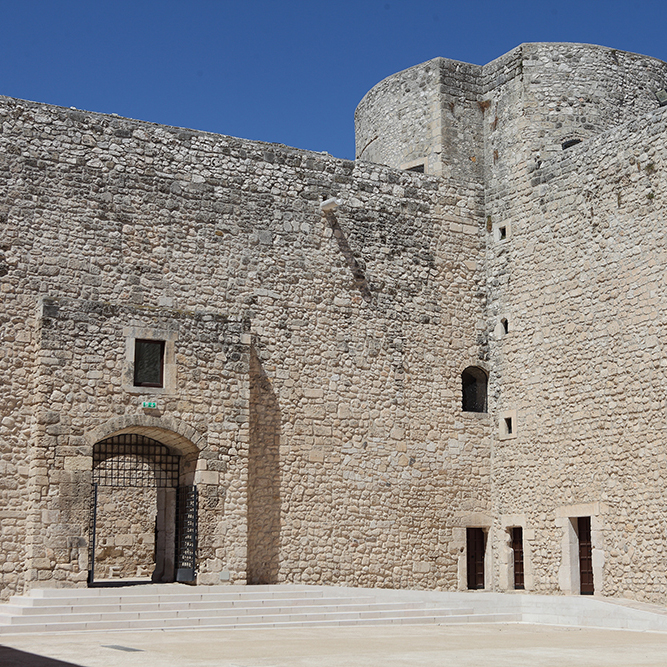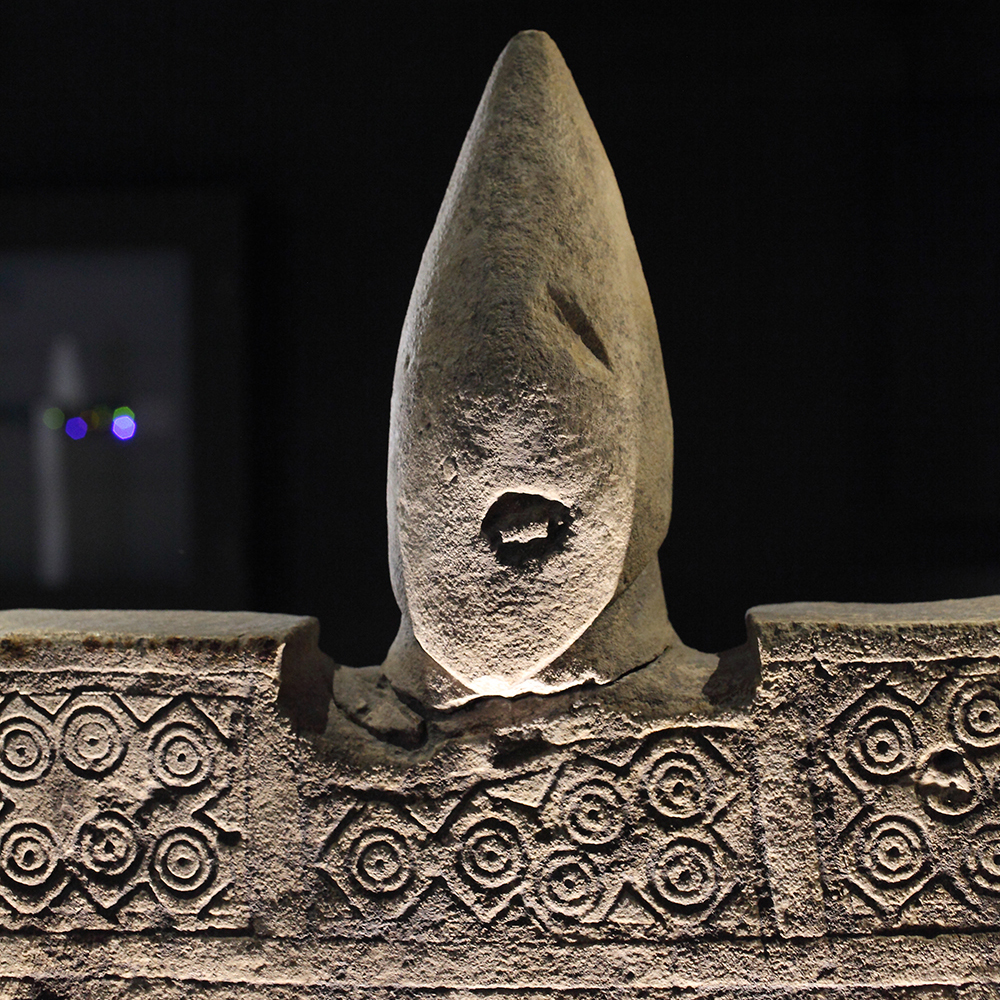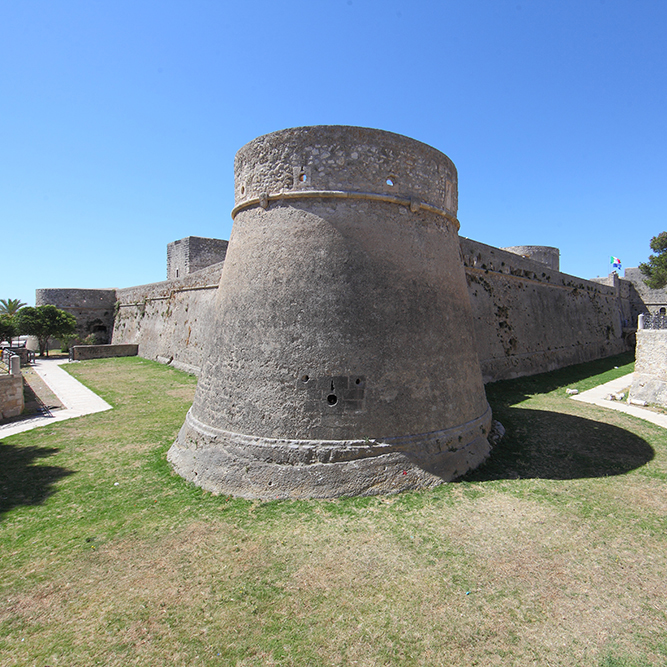National Museum and Manfredonia Castle
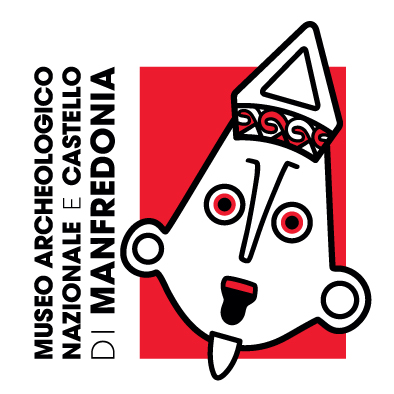 The Museum is located within the impressive architecture of the Angevin-Aragonese castle. The castle in its current form is the result of a series of interventions, modifications and restorations that have transformed the original system over time. This is traditionally attributed to the initiative of Frederick II of Swabia’s son, Manfredi (1232-1266), but offers no document confirms this.
The Museum is located within the impressive architecture of the Angevin-Aragonese castle. The castle in its current form is the result of a series of interventions, modifications and restorations that have transformed the original system over time. This is traditionally attributed to the initiative of Frederick II of Swabia’s son, Manfredi (1232-1266), but offers no document confirms this.
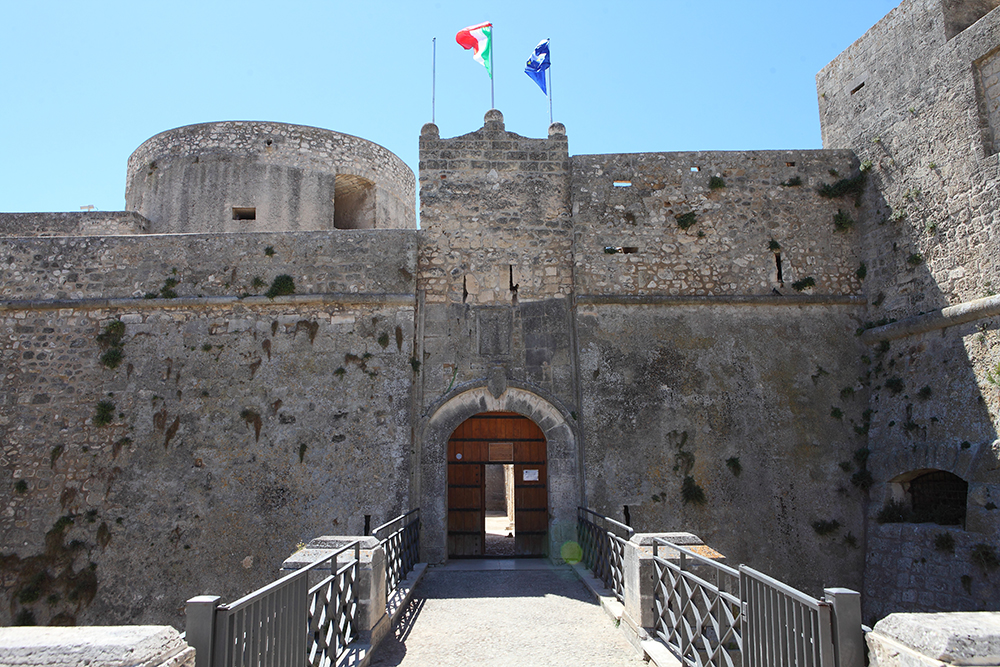
History
The first certain information dates back to 1279, in the Angevin period. In this phase, the castle had a rectangular plan characterized by five square towers, one for each corner, with the fifth probably placed near the main door, transformed into a cylindrical one during the reign of the Aragonese (15th century). With Ferdinand I of Aragon, the Castle of Manfredonia was renovated and adapted to the use of the gunpowder with the addition of a moat and a new external curtain wall consisting of four circular corner towers; one of these was transformed by the Spanish viceroys, in the middle of 16th century, in the pentagonal bastion of the Annunziata. After the sack of the Turks in 1620 the castle lost its defensive function and, over the centuries it was used for different purposes, until 1968 when it was donated to the state to be adapted as a museum, to keep the main archaeological finds of the Gargano and Tavoliere area. The birth of the first nucleus of the Museum’s collection is linked to the discovery of the Daunian steles and to the figure of Silvio Ferri, a Tuscan archaeologist, who personally followed around the middle of the last century the recovery of these extraordinary stone finds, found mainly in the countryside of the Siponto area, often reused in the dry-stone walls and floors of the stables. His work of raising awareness on the territory ended in 1968 with the donation of the Castle to the Italian State – this was so that the finds could be transferred to the castle and be adequately valued.
The museum
The exhibition itinerary follows a chronological criterion that unfolds in four main rooms, enriched by in-depth areas dedicated to particularly important findings from territory of northern Puglia, from prehistoric times to the end of the Archaic age. On the first floor there are two rooms: one dedicated to Prehistory (room 1, La Preistoria. Venti del Neolitico. Uomini del rame [Prehistory, Winds of the Neolothic. Men of the copper]) and the other one dedicated to the Bronze Age (room 2, Metropolis of the Bronze Age). The first section of Room 1 tells the main aspects of the Neolithic in the north of Puglia; a brief look here is aimed at introducing an economy capable of producing its own food, based on agriculture and livestock, with the birth of the first stable outdoor villages, surrounded by concentric moats (Masseria Candelaro, Passo di Corvo, Monte Aquilone, Ripa Tetta). The production of ceramics for preserving, cooking and consuming food, the development of the flint extraction technique, the processing of stone and hard materials from animals (bone and horn) dates back to this period. The last section ends with the Copper Age, or Eneolithic, a period in which the main changes are related to the introduction of copper and above all to the development of ideological aspects, beliefs, and more and more articulated funerary rituals. The tour continues in room 2, with the main testimonies of the Bronze Age, a period extending from 2300 to 1000 BC which marks the beginning of the Protohistory. In this big time frame, profound and fundamental changes took place and, innovations were produced linked especially to the discovery of the metallurgy of bronze, a metal alloy of copper and tin of extraordinary resistance. Among the most important changes in the way of living, we are witnessing birth from the middle Bronze Age of large, fortified settlements, including Coppa Nevigata, Punta Manaccora and Madonna di Ripalta, whose main testimonies are told for the first time in the exhibition. On the ground floor, the last two rooms are dedicated to the Daunian civilization. Room 3, I Dauni. The land of the foreign king illustrates the finds from the funerary contexts of the main centers of northern Puglia inhabited in pre-Roman times by the Dauni, while the last section of the exhibition itinerary (room 4) houses the richest and most famous collection of Daunian steles in the world, the only one of its kind for the artistic knowledge of the Daunian civilization.
Info and Contacts
Corso Manfredi, snc - 71043 - Manfredonia (FG)
Telephone: 0884 587838
Director: Annalisa Treglia
Email: drm-pug.museomanfredonia@cultura.gov.it
Contact us for more information
The fields marked with (*) in addition to the acceptance of our Privacy and Cookie Policy, are required to send the message.



